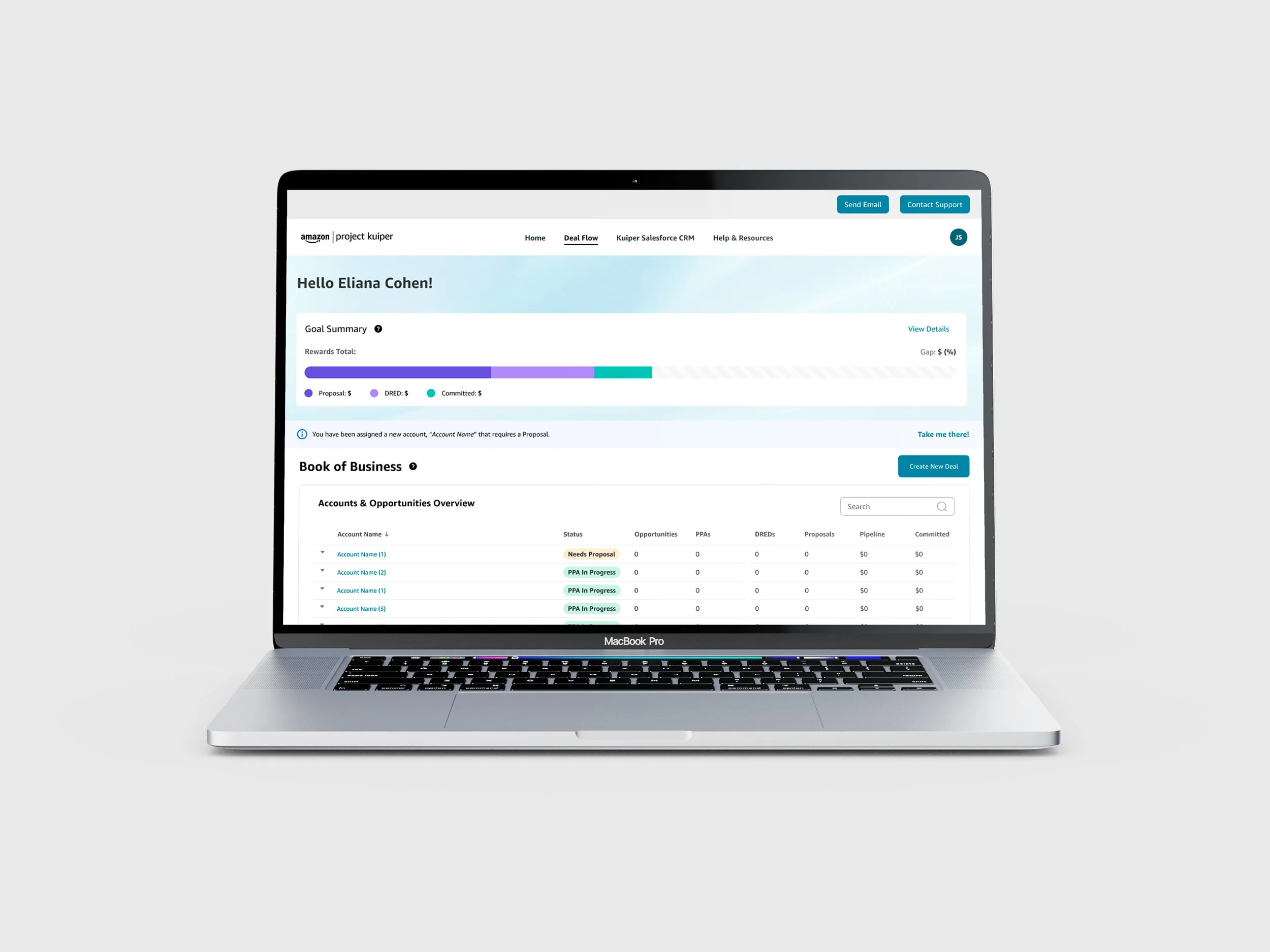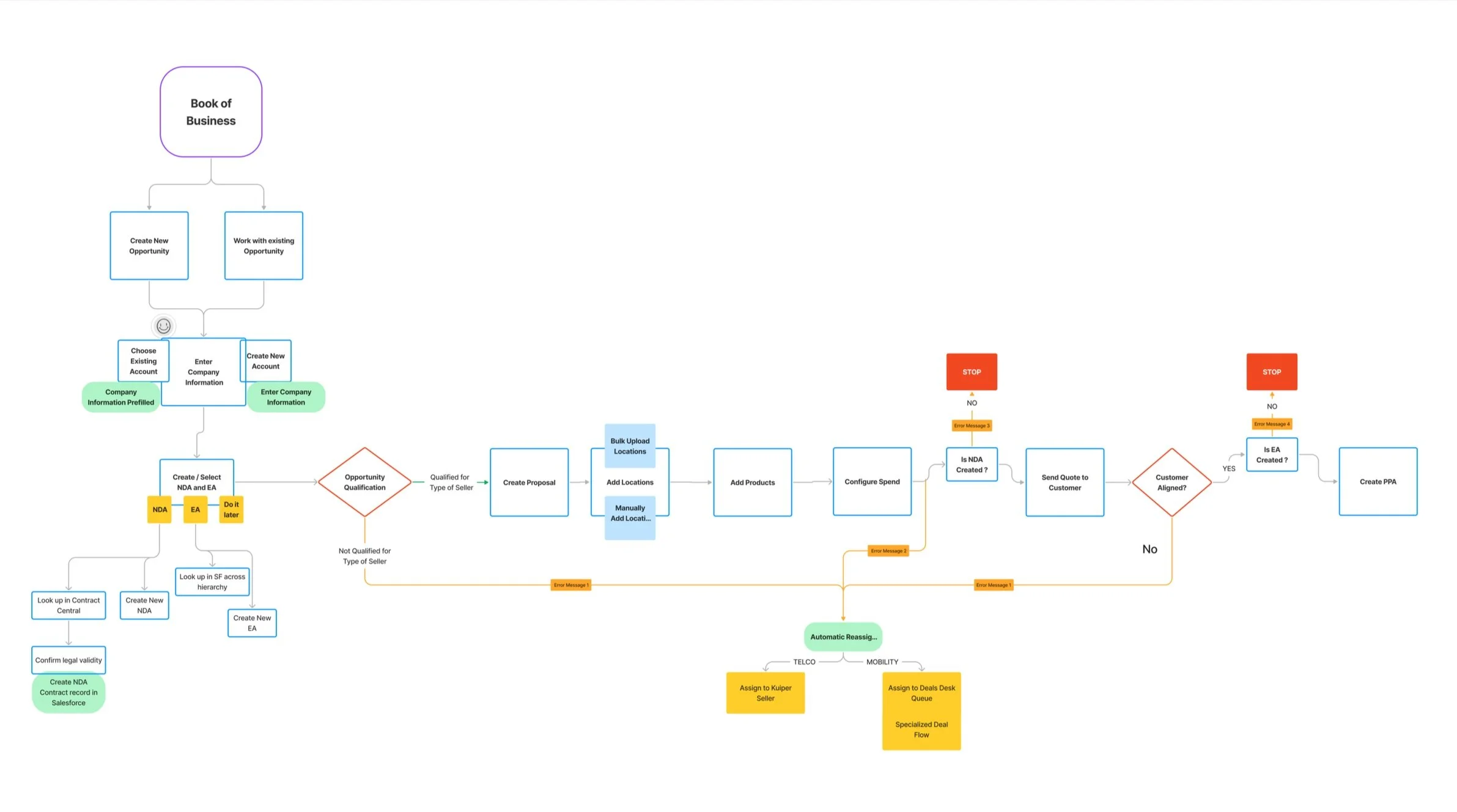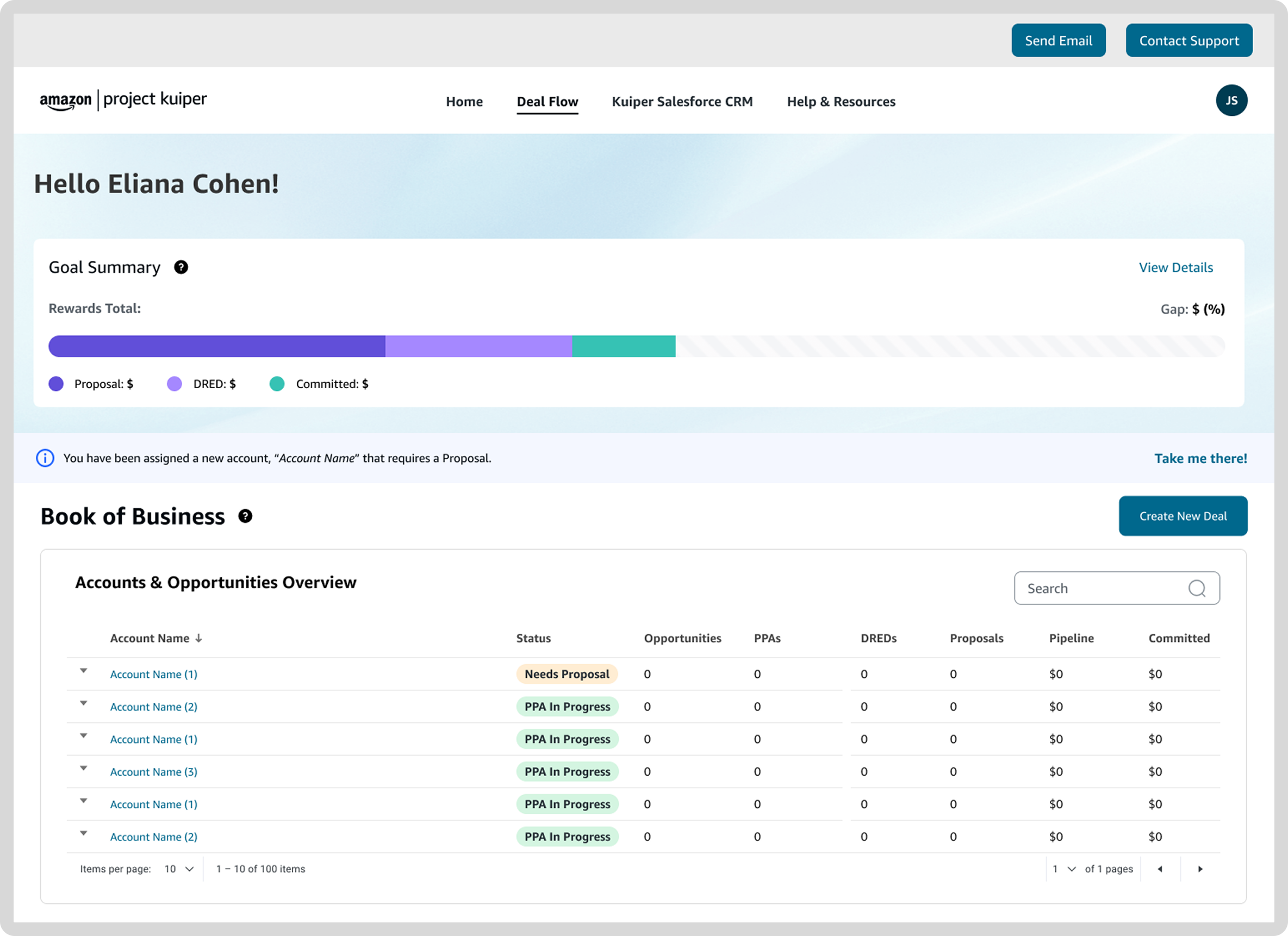Streamlining Sales:
A Custom Proposal & Lead Management Platform
Enhancing efficiency and user experience for an internal sales team through streamlined proposal management and lead tracking.
My Role
Lead UX Designer
Duration
4 Months
Team
Business Leaders, Product Owner, UX Designers, UX Researchers, Lead Engineer
Overview
This project involved designing a new internal platform to help a specialized sales team streamline proposal creation and lead tracking. The goal was to develop an efficient, user-friendly system that improved productivity and optimized lead management while aligning with technical constraints and business needs.
Discovery & Stakeholder Engagement
The project began with a series of onboarding meetings and brainstorming sessions to gather insights and define key requirements. Activities included:
Onboarding & Technical Exploration
Conducted multiple meetings with stakeholders to understand business workflows, existing sales processes, and the technical architecture supporting the platform.
User Understanding
Though the product was designed for a specific sales team group, we developed a user persona to better understand how they would navigate the platform and complete tasks.
Defining Key User Flows
Collaborated with the client to define user flows. The technical documentation helped optimize the experience by identifying areas for improvement and clarifying design constraints.
Iterative Wireframing &
Rapid Prototyping
To establish the platform’s structure and user experience, we created wireframes and prototypes, iterating based on user and business feedback:
On-Site Collaborative Workshops: Led two multi-day working sessions at the client’s location to conduct iterative wireframing and rapid prototyping exercises. These were crucial in defining the product direction, ensuring the flows met business and user needs.
Lo-Fi Wireframe & Prototype Pitch: Presented an initial wireframe and prototype to business stakeholders and end users (the sales team).
Feedback & Direction Change: The original design was heavily based on Salesforce, the platform hosting the product. However, after reviewing feedback, the business requested a more custom solution to better meet their needs.
High-Fidelity Design &
System Integration
The final design phase focused on refining the interface and aligning with the client’s design system while incorporating stakeholder feedback. Activities included:
Applying Branding & UX Guidelines: Ensured alignment with the client’s design system, including typography, colors, and UI components.
Refining User Experience: Integrated feedback from sales representatives and business leaders to enhance usability.
Developing Detailed UI Mockups: Created high-fidelity screens for each major flow, showcasing the final structure of the platform.
Interactive Prototyping: Built a clickable prototype for usability testing and stakeholder presentations.
Challenges, Solutions & Impact
Balancing Customization with Feasibility
Product owners wanted a fully custom Salesforce solution within months, but developers estimated nearly a year. I helped balance custom components with Salesforce-native tools to deliver a feasible, effective solution.
Streamlining Deal Flow
The manual, multi-step sales process made tracking leads difficult. I designed a guided sales flow using a stepper component to clarify lead status and improve team coordination.
Enhancing Seller Support
To reduce friction, I added a persistent support button that opened a contextual panel with step-specific resources and a quick contact form, making help easily accessible.
Improving Communication Efficiency
I integrated an in-product email tool to eliminate context-switching, allowing sellers to send messages and automatically log interactions directly in the platform.
Boosting Sales Motivation
A goals and rewards dashboard gave sellers a visual of progress toward key metrics, reinforcing motivation and alignment with business targets.
Result
The redesigned platform improved proposal management and lead tracking, significantly increasing sales team efficiency. Our user-centered, iterative approach ensured the final product met both business needs and technical constraints.






